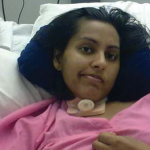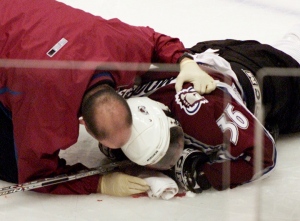News
CBC News | Mentally Stimulating Brain Games May Delay Dementia Onset
- On February 01, 2017
- By JR Rehab
- In Blog, Industry News, News
 0
0
Longevity expert suggests doing something ‘engaging and fun’ to keep the mind sharp
Thomson Reuters Posted: Feb 01, 2017 12:05 PM ET Last Updated: Feb 01, 2017 12:05 PM ET
Older people who engage in mentally stimulating activities later in life may have a lower risk of developing mild cognitive impairment than their peers who don’t challenge their minds, a study suggests.
For adults 70 and older without cognitive problems, playing games was associated with a 22 per cent reduced risk of what’s known as new-onset mild cognitive impairment, a condition that can happen before age-related declines in brain function give way to full-blown dementia.
Working on crafts was tied to a 28 per cent lower risk of mild cognitive impairment, computer use was linked to 30 per cent smaller odds and social activities were associated with 23 per cent decreased risk, the study also found.
- Computerized ‘brain training’ can cut dementia risk, study suggests
- Lumosity to pay $2M over brain-boosting app claims in U.S.
“Mentally stimulating activities perhaps in combination with known healthy lifestyles such as exercise are simple and inexpensive activities that can potentially protect people against the development of mild cognitive impairment,” said senior study author Dr. Yonas E. Geda, a psychiatry and neurology researcher at the Mayo Clinic in Scottsdale, Arizona.
To see how different activities might influence the odds of developing impairments, researchers examined data on 1,929 adults age 70 and older who didn’t have any cognitive problems at the outset.
They evaluated participants every 15 months. Half of their subjects stayed in the study for more than four years.
In surveys, participants reported how often they did various activities. Researchers then compared the risk of new-onset mild cognitive impairment based on whether people did activities at least once or twice a week or no more than two or three times a month.
At the start of the study, half of the participants were at least 77 years old.
By the end of the study, 456 people had developed new-onset mild cognitive impairment, according to a report in JAMA Neurology.
Researchers took a closer look at a subset of 512 people who had an increased risk of cognitive decline because they carried a version of the apolipoprotein E (APOE) gene that is a risk factor for mild cognitive impairment and Alzheimer’s dementia.
For carriers of the high-risk APOE gene, only computer use and social activities were associated with a decreased risk of mild cognitive impairment.
The study wasn’t a controlled experiment designed to test whether or how different activities might directly prevent or delay the onset of cognitive decline, the authors note.
Some previous research has found that repeating familiar activities, even challenging ones, may not necessarily be enough to ward off cognitive decline, said Dr. Denise Park, a longevity researcher at the University of Texas in Dallas who wasn’t involved in the current study.
Playing games or socializing at home may not protect the brain against decline, but devoting several hours a week over several months to learning new activities may be associated with better brain function, Park said by email.
“Our research suggests mentally demanding, novel tasks like quilting or learning photography are worthwhile,” Park added.
“Learning how to use a computer and many apps” also helped.Her advice to elderly people who want to keep their mind sharp: “Do something that is engaging and fun for you that you want to spend time on.”
Warm Aquatic Program Expanding!
- On January 31, 2017
- By JR Rehab
- In Industry News, JR Rehab News, News
 0
0
We have some exciting news for you all!
Thank you everyone for your current or past interest in JR Rehab’s Warm Aquatic Therapy Program. Due to popular demand and high volume of inquiry for the program, we are now expanding our classes to 3 time slots, every Monday and Friday!
The course will continue to run for 4 weeks (8 classes) at Peace Arch Hospital – Weatherby Pool. The next round of classes will start on Monday, February 6th – Monday, March 6th.
Please note: Monday, February 13th is a holiday (Family Day) and there will be no classes.
Class schedule times listed below:
- 9:30am – 10:15am
- 10:15am – 11:00am
- 11:00am – 11:45am
How to register?
Please call the JR Rehab office at 604 254 0444 or email info@jrrehab.ca. When registering, please have payment information ready (Visa, MasterCard etc.), as we require this information to reserve your spot for the program. In the near future, registration will be available online on our JR Rehab website. If you have any questions or inquiry more information, please don’t hesitate to give us a call.
Register now as classes tend to fill up pretty quickly! Each time slot only holds a maximum of 6 participants, therefore spots are not always guaranteed.
Hope to see you there!
New team members at JR Rehab!
- On August 30, 2016
- By JR Rehab
- In JR Rehab News, News
 0
0
JR Rehab would like to welcome the newest members of our team!
Our Fraser Valley team is growing with new Occupational Therapists in South Surrey, Tri-Cities, Chilliwack, Abbotsford and Mission, in addition to our ever-growing Vancouver based team!
We’ve also added an Occupational Therapist to our Victoria based team to support our Vancouver Island services.
In addition to our new Occupational Therapist’s we now have another cantonese speaking Kinesiologist and a Kinesiologist conversational in Tagalog in the Vancouver and Tri-Cities region.
Check out our staff profiles for more information.
JR Rehab is Hiring!
JR Rehab is Hiring! We are currently seeking Occupational Therapists and Physiotherapists in Vancouver, Fraser Valley and Vancouver Island. Check out our careers page for further information – https://www.jrrehab.ca/careers/
JR Rehab seeks qualified Occupational Therapists and Physiotherapists!
If you’re interested in working with a dynamic team of rehab professionals in the Lower Mainland or Vancouver Island please contact us!
JR Rehab Services Inc. now offers Comprehensive Driver Evaluations
- On September 03, 2015
- By JR Rehab
- In Industry News, JR Rehab News, News
 0
0
JR Rehab Services Inc. has opened a dedicated clinic in Langley to perform Comprehensive Driver Evaluations.
A Comprehensive Driver Evaluation is an off and on-road assessment of an individual’s ability to safely perform the required components of driving, including physical, cognitive, perceptual and behavioral aspects.
This evaluation is necessary when experienced drivers are questioned about their ability to safely perform this complex task following a diagnosis of physical, neurological or psychosocial significance.
They will be performed by Maureen Woodward, JR Rehab Services Inc. Occupational Therapist with a Graduate Certificate in Driving Rehabilitation, in partnership with RoadSafetyBC and Certified Driving Instructors.
A Comprehensive Driver Evaluation can also benefit novice drivers by determining their ability to learn driving skills and providing recommendations for driver training programs.
Reclaim Your Ability™ Be Independent
At Home Physio with JR Rehab
- On September 02, 2015
- By JR Rehab
- In Industry News, JR Rehab News, News
 0
0
JR Rehab Services Inc. offer at home physiotherapy throughout the Lower Mainland allowing patients to receive one to one treatment within the comfort and security of their own home.
A dedicated team of physiotherapists is available to assist patients in managing acute and chronic conditions, assessing readiness for active rehab programs, optimizing functional independence and physical performance, rehabilitating injury and effects of disease or disability and preventing reoccurrence, re-injury or functional decline.
“We believe in an accessible, community based approach to rehabilitation and health services,” said JR Rehab Services Inc. founder, Ricardo Nuno.
“By giving patients the option to receive treatment at home, we are helping those who are physically unable to leave their home during recovery, have transportation issues or who would simply feel more comfortable having treatment within their home environment,” said Ricardo.
Reclaim Your Ability™
Brain injury woman publishes diary of steps to recovery
By Emma TraceyBBC News A brain injured mother has written a memoir she can refer to, so that her husband doesn’t have to keep repeating the same stories over and over. Coupled with medical information, she has self-published the book and hopes it will prove a useful resource for others.
A brain injured mother has written a memoir she can refer to, so that her husband doesn’t have to keep repeating the same stories over and over. Coupled with medical information, she has self-published the book and hopes it will prove a useful resource for others.
Faiza Siddiqui, not her real name, was a secondary school physics teacher in Oxford until one Saturday morning in 2009 when the car she was driving hit a van head on.
The 32-year-old received a serious traumatic head injury and has been left with frontal lobe brain damage. She had been driving on the wrong side of the road, although it has been difficult to establish whether something had started to go wrong inside her head before the accident. After spending six weeks in a coma, she woke to find she had no memory of the previous two years.
Siddiqui has been recovering slowly and learning strategies for life. Aside from the memory problems, she has limited use of one arm because of the brain damage. Her book, Diary of a Headcase, joins her personal experience with what text books say about this type of injury.
The book was written under a pen name because of details she has included about her post-injury sex life. Four months ago – five years after her accident – she gave birth to her first child.
Faiza Siddiqui spoke to Ouch with a little support from husband Ben.
Is it difficult being a mother with a brain injury?Annabelle is a good sleeper, which is very important for me because once I get tired, I go a bit weird. I can’t walk straight, I lose my balance and I make stupid judgments. All the disability forums say that babies adapt, and she has got used to not being held very securely. I would never drop her, but I have to dig my thumbs in.
Do you have strategies to help you remember things?If I have to remember a shopping list, like bread, sugar and milk, I think of my route from home to the coach stop for school which I did every day when I was 14. Along that road in my mind, I’ll imagine really big images to represent each thing on the list. For bread, I think of the sitcom Bread and the brown ceramic hen that the family put their money in. Sugar is a word [used in place of a swear word] so I think of dog mess that I might have stepped in on the way to school. Milk is a black-and-white daisy cow with big udders at the traffic lights, with cars trying to avoid it. It’s the same technique I used for my exams at school, so when they mentioned it in hospital I knew it was something I could do.
How has the brain injury changed you?That is a hard question. Is it because my brain’s been meshed and damaged and interfered with, or have I changed because of this life-changing experience? And it is hard to answer honestly because it’s difficult to see all the things that I am now, as not just being a damaged version of the old me. My memory is worse and I tend to get stuck in a cycle. I have to stop and notice that I’ve been going around in circles for quite a long time. I have to force myself to step back and ask myself a few set questions like: “What is it like from the other person’s point of view?” “What patterns keep coming up?” “What are you thinking again and again?” It’s a horrible way of being because it involves me saying that I am, actually, brain damaged.
Why did you write Diary of a Headcase?When I asked Ben to tell me about parts of my life, he would get annoyed because he had told me before. He strongly encouraged me to write it all down. Now, I remember bits of my book better than I remember the thing itself… but it has helped me make sense of what my memories are.
Teens with concussion history may be more likely to use drugs, alcohol
- On January 14, 2015
- By JR Rehab
- In Industry News, News
 0
0

Dr. Michael Cusimano, a neurosurgeon and researcher in Toronto, said it’s alarming how early students mix a head trauma with alcohol or drug use. (Yuri Markarov/St. Michael’s Hospital/Canadian Press)
It’s possible some teens with a traumatic brain injury turn to alcohol or drugs to deal with symptoms
The Canadian Press Posted: Nov 27, 2014 10:40 AM ET Last Updated: Nov 27, 2014 10:50 AM ETTeenagers who have suffered a concussion or other traumatic brain injury are more likely to report using alcohol and drugs compared to peers with no history of such an injury, researchers have found.
Use of non-prescribed tranquilizers and opioids as well as illicit drugs like cannabis, cocaine and even crystal meth was two to four times higher among Ontario high school students who had experienced a traumatic brain injury (TBI) than classmates who hadn’t had a serious blow to the head, the researchers report in a study published Wednesday in the Journal of Head Trauma Rehabilitation.
Use of non-prescribed tranquilizers and opioids as well as illicit drugs like cannabis, cocaine and even crystal meth was two to four times higher among Ontario high school students who had experienced a traumatic brain injury (TBI) than classmates who hadn’t had a serious blow to the head, the researchers report in a study published Wednesday in the Journal of Head Trauma Rehabilitation.
- How concussions can alter teens’ behaviour
- Concussions in young athletes need ‘to be taken seriously
The study, which analyzed data from the 2011 Ontario Student Drug Use and Health Survey, found that one in five of the Grade 9 to 12 students reported they’d had a previous TBI.
Besides having a higher rate of alcohol and drug use, students in this group were also 2.5 times more likely to have smoked one or more cigarettes daily during the previous year and nearly twice as likely to have engaged in binge drinking — consuming five or more alcoholic drinks in one sitting — in the previous month.
“It’s a really toxic combination when you have the two together,” co-principal researcher Dr. Michael Cusimano said of mixing a head trauma with alcohol or drug use. “And it’s alarming how early this is occurring. This is Grade 9 to Grade 12.”
“We know that people who have alcohol or substance use problems don’t recover as well from a brain injury,” said Cusimano, a neurosurgeon at St Michael’s Hospital in Toronto. “They can’t participate as well in the rehab, and they don’t recover their original abilities as well as people who have not been using drugs and alcohol.”
As well, adolescence is an age when the brain is still developing — and having a TBI and exposing the brain to the effects of alcohol or drugs may “greatly impair” that development, he said.
Researchers defined a TBI as any hit or blow to the head that resulted in a student being knocked unconscious for at least five minutes or spending at least one night in hospital due to symptoms associated with the injury. Some of these brain injuries could have been classified as concussions, which are mild to moderate forms of brain injury.
The study looked at reported TBIs and substance use among Ontario students, using responses from a representative sample of 6,383 respondents who took part in the survey. Data allowed researchers to determine substance use habits and TBI history, but not which came first — the brain injury or the alcohol and/or drug use.
“People with these injuries may be using these substances more, but the effects of the injury may be such that it may predispose them to use the substances more often as well, ” said Dr. Robert Mann, a senior scientist at the Centre for Addiction and Mental Health who co-led the study.
“On the other hand, we also know that people who are substance users may be more likely to have these kinds of injuries,” said Mann. “The classic example is alcohol. Alcohol impairs psychomotor performance, so you’re more likely to have an injury, perhaps more likely to have a head injury.”
Injuries more common than thought
Many recreational drugs also can affect physical performance and judgment, setting up a person for potential harm, he said.
In any given year, about five per cent of teenagers will suffer a concussion or other brain injury, and about 60 per cent of them will occur while participating in sports.
“What we found in this research is that these injuries are more common than we would have thought … and that also there does appear to be a cluster with these injuries of problematic behaviour, substance abuse and mental health concerns,” said Mann.
“And we know that substance use problems and mental health problems in adolescence can result in problems later on in life.”
Concussions and other brain injuries can cause dizziness, confusion, memory loss, headache, nausea or vomiting.
Depending on the severity of the injury, symptoms can persist for some time. Concentration and the ability to remember may be impaired; the person can be irritable, depressed and have marked personality changes; sensitivity to noise and light, along with disturbed sleep, are also common.
Cusimano said it’s possible some teens with a traumatic brain injury turn to alcohol or drugs to deal with such symptoms, trying to make themselves feel better by self-medicating.
“I think parents, coaches, teachers and guidance counsellors need to be aware of this toxic combination of drugs, alcohol and brain injury, and they need to at least inquire about [them],” he said.
“So if they have a TBI, they need to inquire about drugs and alcohol. And if they use drugs and alcohol, they need to inquire about brain injury. Both things need attention.”
Rate My Hospital Blood test offers swifter, safer diagnosis of sport brain injury

Colorado Avalanche forward Steve Moore was forced to quit hockey 10 years ago after the Canucks’ Todd Bertuzzi punched him, leaving him with a concussion and a fractured neck.
Raised levels of nerve cell protein a marker of concussion
Thomson Reuters Posted: Mar 14, 2014 8:37 AM ET Last Updated: Mar 14, 2014 8:39 AM ET
Swedish researchers say they have devised a blood test that could better diagnose sports-related brain injuries and prevent American football, rugby and ice hockey players returning to the field in danger.
In findings from a study of ice hockey players, the researchers said their method can show just an hour after a head injury how severe the concussion is, whether there is a risk of long-term symptoms, and when the player can return to the sport.
“In ice hockey and other contact sports, repeated concussions are common, where the brain has not finished healing after the first blow,” said Henrik Zetterberg of the Sahlgrenska Academy at the University of Gothenburg, who led the study.
“This kind of injury is particularly dangerous, but there have not been any methods for monitoring how a concussion in an athlete heals.”
A growing body of scientific evidence, much of it from studies of former American football players and boxers, suggests repeated head knocks such as in contact sports can cause chronic traumatic encephalopathy, a brain condition that can lead to loss of cognitive function, dementia, aggression and depression.
While mild concussions don’t generally cause loss of consciousness, they can induce other symptoms such as dizziness, nausea, trouble concentrating, memory problems and headaches. Severe concussions can cause a loss of consciousness. Most concussions get better in days or weeks, but some patients can suffer symptoms more than a year after injury.
The National Football League in the United States agreed in August to pay $765 million US to settle a lawsuit brought by thousands of former players, many suffering from dementia and health problems. They accused the league of hiding the dangers of brain injury while profiting from the sport’s violence.
- Concussion guide for doctors provides 6-step recovery plan
- Concussion recovery delayed by mental activity, study shows
- Concussions: What to watch for
- Concussions in young athletes need ‘to be taken seriously’
“Concussions are a growing international problem,” said Zetterberg. “The stakes for the individual athlete are high, and the list of players forced to quit with life-long injury is getting ever longer.”
Zetterberg’s team examined all the players in the Swedish Hockey League and found that between September and December of the 2012/2013 season alone, 35 of 288 players had had a concussion. In three cases, it was so severe that the player was knocked unconscious.
For the study, which was published on Thursday in the journal JAMA Neurology, the players who had a concussion were asked to provide repeated blood samples, initially directly after the concussion and then also during the following days.
The results were compared with the pre-season samples from two full teams, and the scientists found that having raised levels of a nerve cell protein called tau in the blood was a marker of concussion.
By measuring tau levels in regular tests, the researchers could say how severe the concussion was just one hour after the injury, and could predict with a high level of certainty which players would have long-term symptoms and needed to rest longer.
Yelverton Tegner, a researcher at Lulea University of Technology and a team doctor for the Swedish national women’s football team, who also worked on the study, said the ultimate aim was “to have a working kit that can be used for diagnostics in hospitals, and perhaps also at rink-side or in stadiums”, for use immediately after a player is concussed.
Zetterberg said the same test could also be used in general emergency medical care to diagnose brain damage from concussions, regardless of how they happened.

